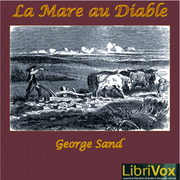
This is the second novella of de Beavoir’s that seems to have been “unpublished in her lifetime”. The first, The Inseparables (Inseparable in the US), came with a lot of explanatory material whereas Misunderstanding in Moscow comes with none. Vintage Classics gives the date of first publication as 2013, and the date of this edition, translated by Terry Keefe, as 2023, though elsewhere I have seen 1966 given as the date of first pub. (Goodreads), but that must be a mistake. 1966 is the year in which the action takes place and I imagine this novella was written a year or so later.
As The Inseparables is the story of an important friendship in de Beauvoir’s adolescence, so Misunderstanding in Moscow, the story of a marriage in late middle age, marks (the beginning of) the other end of de Beavoir’s life. I should say Simone de Beauvoir was born in 1908 and died in 1986, so in 1966 she was 58, though I think the couple in the story, Nicole and André, are a few years older.
The Inseparables was clearly autofiction, as was apparently (I haven’t read it, yet) her first novel, She Came to Stay (1943). It is not clear that Misunderstanding is, or even who the husband might be, it doesn’t appear to be Sartre. On the other hand, de Beauvoir was interested in women’s ageing: “Her 1970 long essay La Vieillesse (The Coming of Age) is a rare instance of an intellectual meditation on the decline and solitude all humans experience if they do not die before about the age of 60.” (wiki)
A little more about the timing. This was written at a time when Communism was a powerful force in France, especially in the trade union movement; but before the student and worker uprisings of May 1968, which the Communists eventually helped crush; and two or three years, I think, before de Beauvoir became active in Women’s Lib. In the USSR, Krushchev, who had denounced Stalinism, and had negotiated the worst of the Cold War, had been replaced as leader by Brezhnev a couple of years earlier.
In the novel Nicole and André, who live in Paris, are in Moscow, for the second time in 3 years, visiting André’s daughter, Macha, who is a long-time resident. Nicole and André have between them a grown up son, Phillipe, who plays no part in the story, except André is jealous of the attention Nicole pays him. Likewise, I think Macha has a partner and maybe a son who play no part, but whose names keep cropping up so it takes a while to work out who is being spoken about.
The writing is in the third person, from the POV of either Nicole or André, swapping without warning, which makes the story very intimate.
[Macha] addressed her father informally [tu], Nicole formally [vous]. it was to be expected, and yet at the same time peculiar.
‘Hand me your bag.’
That was to be expected, too. But when a man carries your bag, it’s because you are a woman: when a woman does, it’s because she is younger than you, and you feel old.
‘Give me the luggage slips and sit there,’ Macha said authoritatively. Nicole obeyed. She was old. With André she often forgot the fact, but dozens of little irritations periodically reminded her of it.
At the beginning it seems the novel might be an exploration of the possibilities of Communism. “[André] had been bought up in the cult of Lenin: his mother, at 83, was still a militant in the ranks of the Communist Party. He himself had not become a member, but he had always thought, through the turmoils of both hope and despair, that the USSR held the key to the future, and hence to the present era and his own destiny.” But this stream quickly peters out into occasional petty grievances about seemingly random bureaucratic restrictions on their travel plans.
Instead, as Macha – originally Maria – and André spend hours with their heads together over Russian lessons, Nicole feels increasingly left out. André likewise feels that there has developed a distance between him and Nicole, despite his unchanged feelings for her.
As we wander round Moscow over two or three weeks – and Moscow is less of a presence in this story than it might have been – Nicole becomes increasingly discontented, and André increasingly bewildered. The POV is mostly Nicole’s
In fact, there had been no real symmetry between their two lives. He had had exactly what he wanted: a home, children, leisure, pleasures, friendships, and a little turbulence. Whereas she had given up all her youthful ambitions – because of him.
[and later – ]
There had been quarrels in their life, but for serious reason. When one or the other of them had had an affair; or over Phillipe’s education. They were real conflicts, resolved violently, but quickly and definitively. This time, it had been a swirl of smoke, smoke without fire; and because of its thinness, it had not quite dispersed.
What conclusion Nicole, and de Beauvoir, reach of course I can’t tell you, and in any case all the important stuff is in the journey, the problems canvassed, not the ending.
.
Simone de Beauvoir, Misunderstanding in Moscow, first pub. 2013. This edition, Vintage Classics, London, 2023, translated by Terry Keefe. 110pp.
see also my reviews:
S de Beauvoir, The Inseperables
D Cohn-Bendit, Obsolete Communism, The Left Wing Alternative. Coming!


